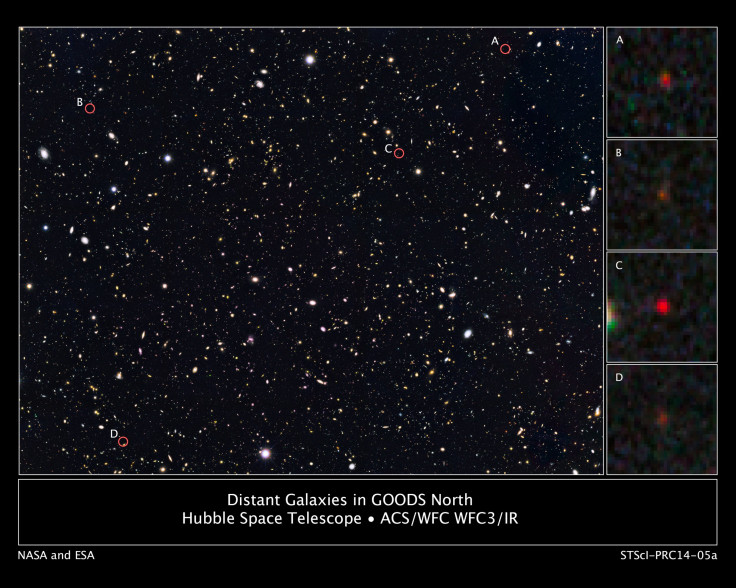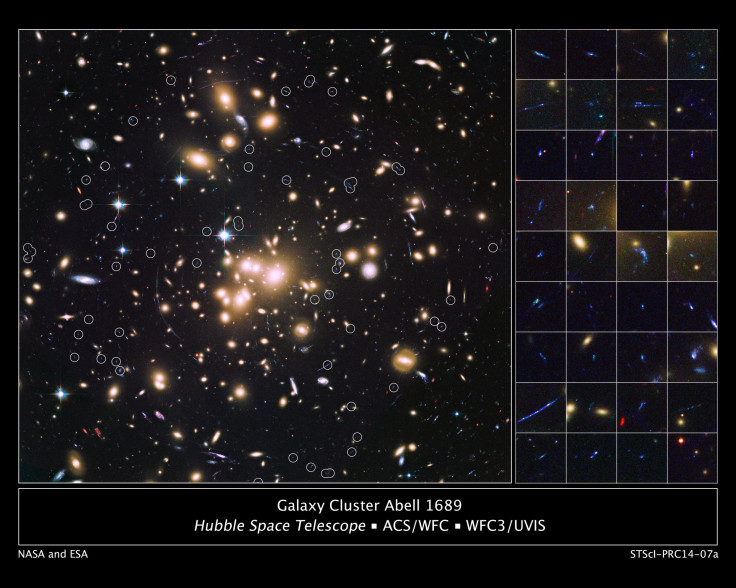Hubble And Spitzer Space Telescopes Team Up To Observe Ancient Galaxies In The Distant Universe
The Hubble Space Telescope and NASA’s Spitzer Space Telescope were able to observe ancient galaxies that formed early on in the universe’s existence. The galaxies were seen as they appeared 13.2 billion years ago, roughly 500 million years younger than the universe itself.

These young galaxies are “thought to be responsible for most of the stars we see today,” astronomers said, adding that the galaxies "are bursting with star formation activity, which accounts for their brilliance." The galaxies are rather small, roughly one-twentieth the size of the Milky Way, and contain around one billion stars. The two space telescopes were able to observe these ancient galaxies due to their increased brightness caused by the star formation activity. The brightest galaxy is forming new stars at a rate that’s 50 times faster than the Milky Way.
“There are strange things happening regardless of what these sources are," Garth Illingworth, a professor of astronomy and astrophysics at the University of California, Santa Cruz, said in a statement. "We're suddenly seeing luminous, massive galaxies quickly build up at such an early time. This was quite unexpected.”
Hubble was the first to observe the four galaxies and their star formation activity while Spitzer was used to determine the stellar mass, NASA notes. The four galaxies were the most-distant objects to have their masses measured. In addition to these distant galaxies, Hubble used two galaxy clusters to peer deeper into the universe. The Abell 1689 galaxy cluster was used to observe some of the “smallest, faintest and most numerous galaxies ever seen in the remote universe.” Due to gravitational lensing, astronomers were able to observe 58 distant galaxies.
These faint galaxies were seen for the first time thanks to gravitational lensing. Hubble used the Abell 2744 galaxy cluster to magnify these galaxies as these large objects warp space-time, with light from distant galaxies bending around the galaxy cluster. The distant galaxies appear as arcs throughout the image. The images are part of Hubble’s recent Frontier Fields observing program.

Researchers hope to use gravitational lensing to observe these faint galaxies, which are believed to be ubiquitous throughout the early universe. According to NASA, Hubble’s Wide Field Camera 3 survey indicates small, faint galaxies outnumber larger, brighter galaxies by a ratio of 100 to 1.
“The bright galaxies, however, represent the tip of the iceberg," Brian Siana, a University of California, Riverside astronomer and leader of the research, said in a statement. "We believe most of the stars forming in the early universe are occurring in galaxies we normally can't see at all. Now we have found those 'unseen' galaxies, and we're really confident that we're seeing the rest of the iceberg.”
The most-recent observations are a good sign for NASA’s James Webb Space Telescope, Hubble’s successor, set to launch in 2018. The James Webb Space Telescope will continue the hunt for young galaxies that formed early on in the universe’s history. The recent Hubble findings were presented at a press conference sponsored by the American Astronomical Society.
© Copyright IBTimes 2024. All rights reserved.






















